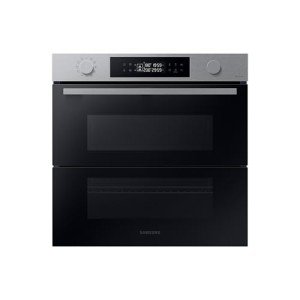The Rise of Built-In Ovens: A Seamless Approach to Modern Cooking
In modern kitchen areas, where style aesthetics mix flawlessly with functionality, one device stands apart as a real video game changer: the built-in oven. As homeowners and chefs alike continue to look for ingenious options that boost their cooking experience, built-in ovens have actually ended up being increasingly popular. This post checks out the benefits, considerations, and trends surrounding built-in ovens, highlighting why they are an essential function in contemporary cooking areas.
What is a Built-In Oven?
A built-in oven is a kitchen area home appliance developed to be integrated into the kitchen cabinetry of a cooking area rather than standing alone. Unlike conventional freestanding ovens, which can be moved and positioned anywhere, built-in ovens can be found in numerous styles and sizes to fit specifically within designated areas. Offered in single or double configurations, these ovens use a streamlined appearance that matches contemporary cooking area styles.
Benefits of Built-In Ovens
1. Space-Saving Design
One of the most enticing advantages of built-in ovens is their space-saving design. By integrating the oven into kitchen cabinetry, you can release up valuable counter and flooring area. This is particularly beneficial in smaller kitchen areas, where maximizing room is necessary. kitchen built in oven -in ovens can be installed at eye level, making them more available and minimizing the need to flex down.
2. Visual Appeal
Built-in ovens contribute to a streamlined and cohesive kitchen area style. Offered in various finishes-- such as stainless steel, black, white, and custom cabinetry-- they can mix perfectly into the total decoration. This aesthetic appeal enhances the kitchen area's visual consistency and elevates the area, developing a contemporary and sophisticated atmosphere.
3. Enhanced Functionality
Numerous built-in ovens come equipped with advanced cooking technologies, such as convection cooking, steam ovens, and wise features. These improvements enable flexible cooking options, making it easier to achieve professional-level outcomes in the house. Smart built-in ovens can even link to Wi-Fi, making it possible for users to manage the oven from another location, get notifications, and access a variety of cooking programs and dishes.
4. Improved Ventilation
Since built-in ovens can be integrated with kitchen hoods and ventilation systems, they can assist maintain better air quality and lower cooking odors. This is particularly significant for those who enjoy to cook with aromatic spices and components, as an efficient ventilation system can keep the cooking area comfy and welcoming.
5. Customization Options
Built-in ovens use a broad range of personalization options to match individual cooking designs and needs. From professional-grade home appliances with multiple cooking modes to compact designs for smaller kitchen areas, house owners can select the oven that fits their particular requirements. Many manufacturers also provide customizable front panels, permitting you to match the oven's look to your kitchen cabinetry for a really unified look.
Factors to consider When Choosing a Built-In Oven
While built-in ovens have numerous benefits, there are essential considerations to bear in mind before purchasing:
1. Rate
Built-in ovens generally come with a higher cost than their freestanding counterparts due to their design and installation requirements. It's important to consider both the expense of the oven and any extra expenditures related to kitchen cabinetry adjustments or installation.
2. Installation Requirements
Installing a built-in oven typically needs professional help, particularly if you require to modify existing kitchen cabinetry. Make sure that you think about any costs connected with installation, consisting of labor and possible cabinets modifications.
3. Size and Dimensions
Before purchasing a built-in oven, measure the designated space accurately to ensure a correct fit. Built-in ovens can be found in different sizes and setups, so selecting one that lines up with your needs and kitchen area design is crucial.

4. Way of life and Usage
Consider your cooking routines and needs when selecting a built-in oven. If you often host big gatherings, a double oven may be more beneficial. On the other hand, if you have a compact kitchen area, a single-wall oven might be sufficient.
Trends in Built-In Ovens
The kitchen area device market is constantly developing, and built-in ovens are not exempt from emerging patterns. Some existing trends include:
Smart Technology Integration: With the rise of wise home innovation, built-in ovens now frequently feature connection options. This allows users to monitor cooking progress and adjust settings via mobile apps.
Energy Efficiency: As sustainability becomes a top priority, many producers are purchasing energy-efficient built-in ovens that reduce energy usage while keeping efficiency.
Multi-functional Designs: Built-in ovens now use functions such as air frying, sluggish cooking, and steaming, supplying versatility that satisfies a large range of cooking techniques.
Conclusion
Built-in ovens undoubtedly represent a perfect blend of design, function, and convenience in today's kitchens. As more property owners select this modern option, the focus moves to developing a cooking area that is as aesthetically pleasing as it is useful. Whether you are constructing a brand-new home or remodeling your cooking area, considering a built-in oven might raise your culinary experience and change your cooking area into a stylish and functional sanctuary. With a selection of choices readily available and continuous innovations in innovation, built-in ovens remain a standout option for both beginner cooks and culinary lovers alike.
